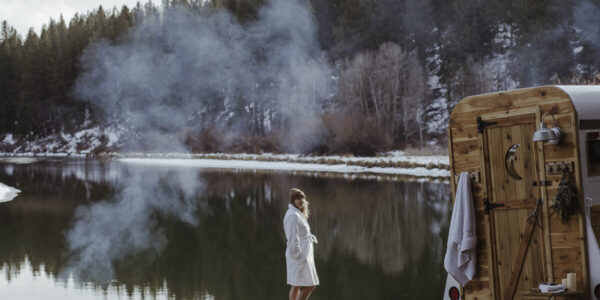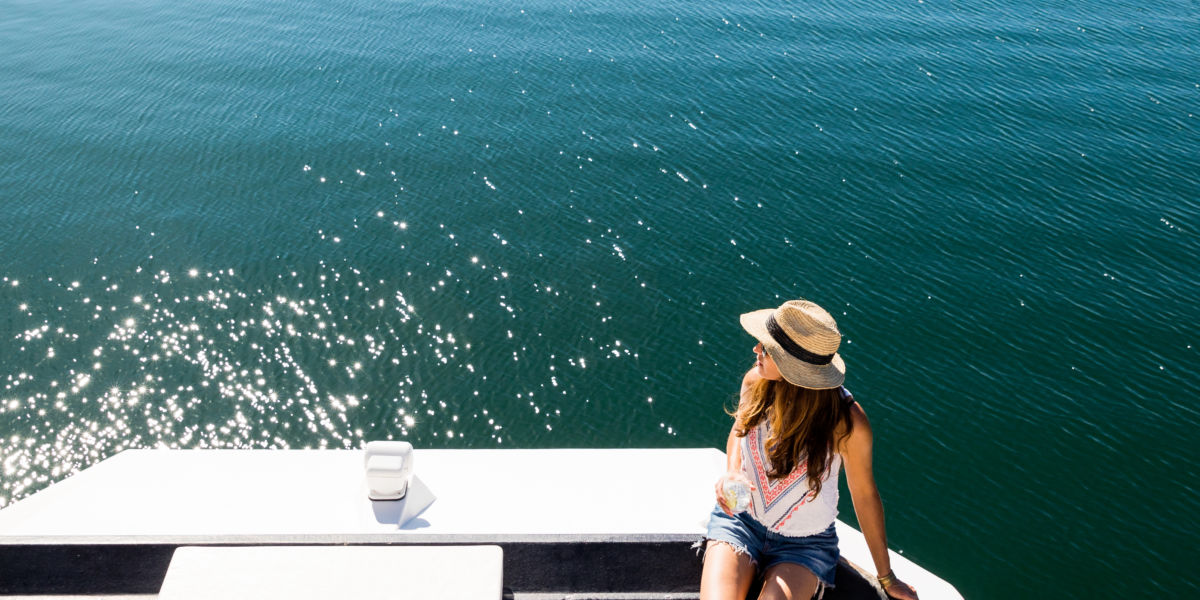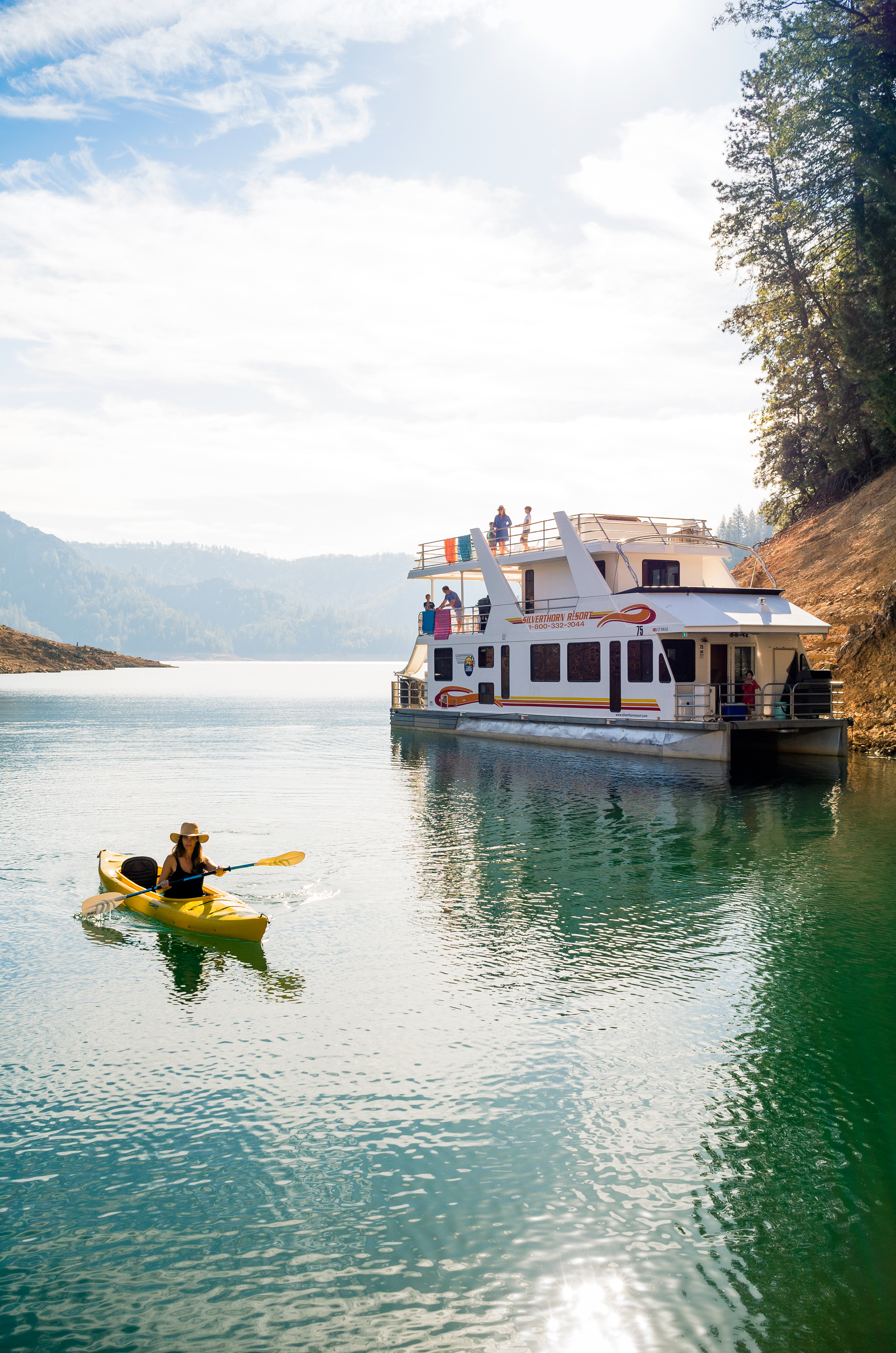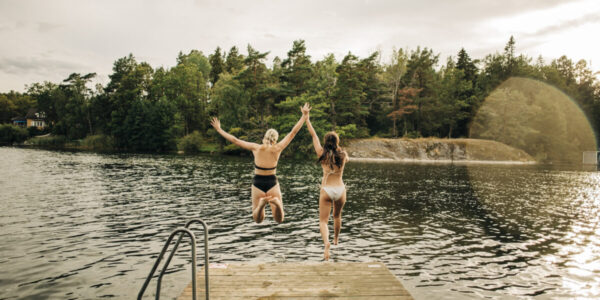
The Ultimate Venue for Your Next Family Vacay? A Houseboat
Three generations, plus 47 square miles of lake water, multiplied by one action-packed houseboat equals an infinitely memorable family vacation

Erin Kunkel
It was my family’s first full-fledged reunion in years: 18 relatives camping at the northern end of Shasta Lake, the sprawling, tentacled body of water that is the largest human-made reservoir in California. It was July and the state was mired in a brutal, multiyear drought. Walls of red mud ran up the banks, an ugly reminder of where deep blue had once been. But each day, we all raced for the nearest marina, where we had rented a modest pontoon that looked like a glorified carport. It was as basic as they come, but it could get us out onto the lake, away from the muddy shores, and that was good enough.
I remember sitting on the deck—my 1-year-old daughter, Roxie, on my lap—while my dad and two of his brothers drank Coronas, laughing like surfers watching the waves. My cousins were shoulder to shoulder around a board game, competitive shrieks rising from the table. And everyone else was taking a dip, pruning in a lake so warm you could seemingly stay forever.
Yet I found myself eyeing flashier vessels than ours, houseboats with waterslides and hot tubs, barbecues and bars. I was intrigued by their indulgences, their ability to host entire families in one place. It could be like a cabin in the woods, I thought, except with a revving engine and the freedom to move from beach-lined bay to rocky inlet to open water. I craved a bigger craft, sure. But what I really wanted was more time swimming and floating, huddling around card games, and laughing at stories told again and again.The following spring, as rainfall transformed oversize mud puddles into plentiful blue expanses and California’s lakes were back at “full pond”—as they say in houseboating lingo—a trip began to take shape in my mind. I researched rental listings online, seeking something for a few days in the summer that could comfortably sleep my husband, Tim, and myself, my dad, his three brothers and sister, each of their spouses and grown children—cousins ranging in age from 18 to 48—and the next generation of our crew, my daughter, Roxie, now 2. With a reservation for three days and four nights in place, the trip was on.

It was 107° outside when we pulled up at Silverthorn Marina, our tiny Toyota hatchback overflowing with Costco impulse buys. At the dead end of a twisted, two-lane road through dry, oak-covered hills, Silverthorn Resort is located on the edges of eastern Redding. The air tasted like toasted bay laurel leaves, and the scene bordered on chaos.
Our boat, #69, was at the end of a crowded “courtesy dock.” Check-in didn’t start until late in the afternoon, so everyone who’d rented a vessel was trying to do it at the same exact time, it seemed. Cars and pick- up trucks jockeyed for position, and dock carts were so scarce they were being hoarded. As I pushed mine up the long, steep concrete ramp, I passed an older woman who was navigating a full load while doing her best to keep the weight of her cart from carrying her downhill. “This is supposed to be a vacation,” she said between deep gulps of hot air.

